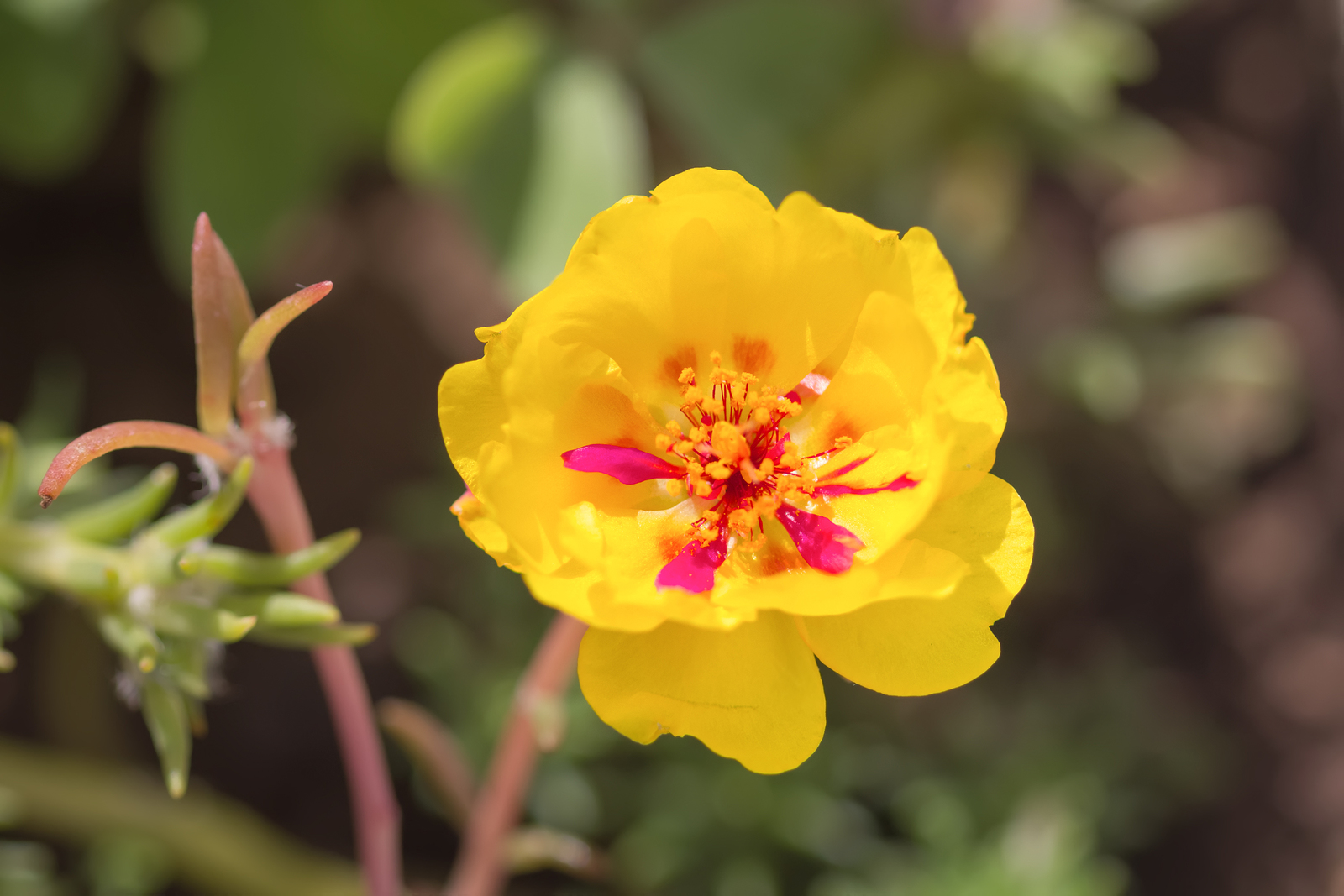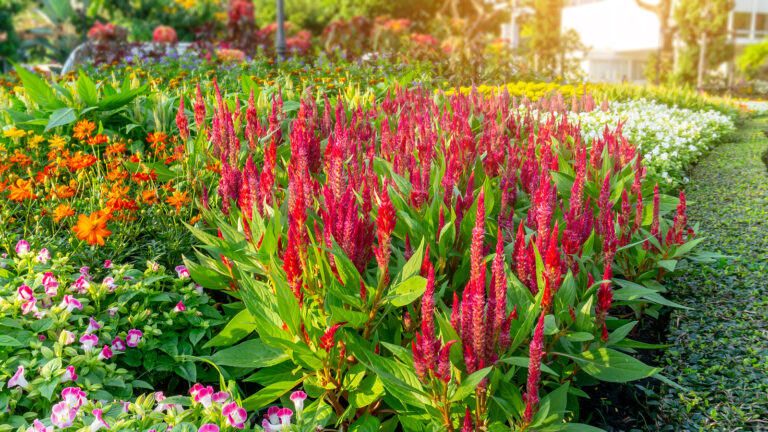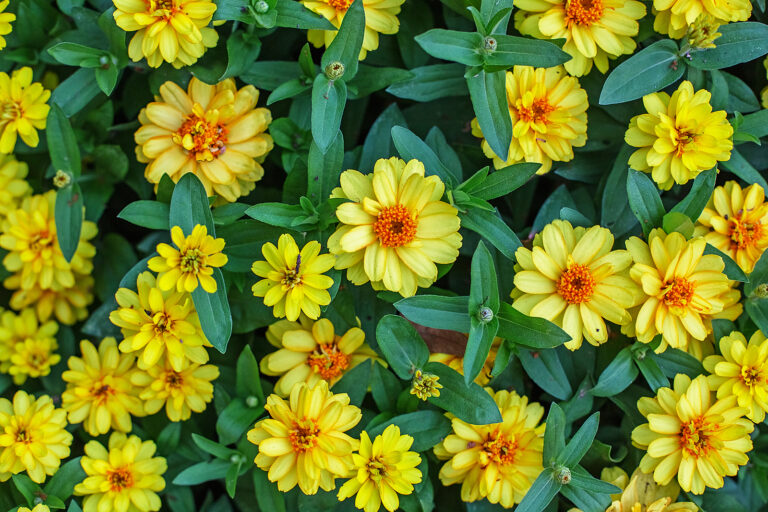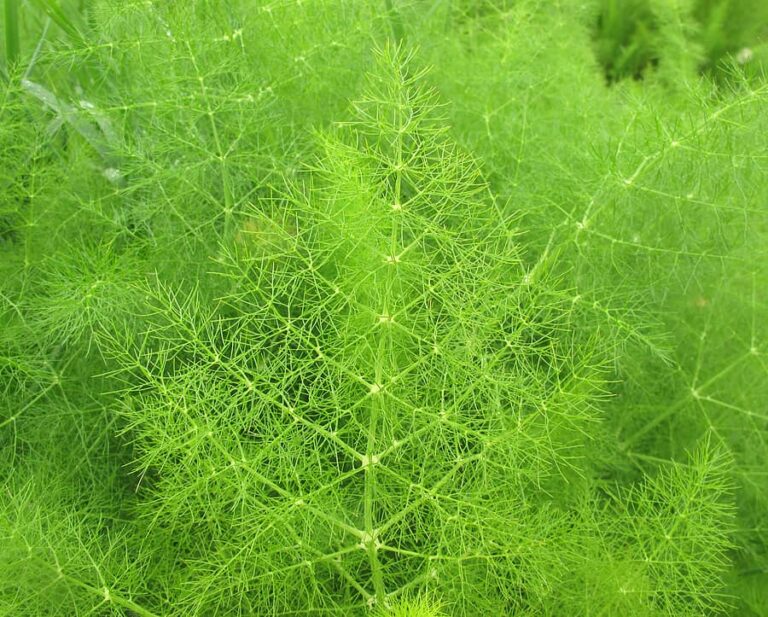How to Grow Moss Rose — Portulaca
Portulaca–commonly called moss rose–produces single or double, satin-textured, rose-pink, red, yellow, or white flowers to 1 inch (2.5cm) across in summer. Flowers typically open only in bright sunlight.
Portulaca is an old-fashioned favorite. It flourishes in sunny, dry areas where few other plants will grow. Flowers open fully in sun and close in the late afternoon.
Portulaca is a semi-succulent, spreading annual. Clusters of cylindrical, fleshy leaves are bright to mid-dark green on trailing stems.
There are two popular species of Portulaca; they are moss rose and purslane. Moss rose has fat, needle-shaped leaves; purslane has fat, oval leaves. Both plants are spreading and are a good choice for temporary ground cover. They can also be used in hanging baskets, rock gardens, and edging.
Flower Garden Success Products at Amazon:
- Wildflower Seed Mix Attracts Hummingbirds and Butterflies
- Eden Brothers All Perennial Seed Mix
- 10 pcs Stainless Steel Garden Hand Tool Set
- Gorilla Cart 4 Cu. Ft, 300-pound Capacity
- Neem Bliss 100-% Cold Pressed Neem Oil
- Safer Brand Insect Killing Soap

Portulaca Overview
Portulaca, commonly known as moss rose or purslane, is a vibrant, low-growing annual that thrives in warm, sunny conditions. Native to South America, this plant is known for its cheerful, cup-shaped blooms that come in a variety of bright colors such as pink, yellow, orange, white, and red. The flowers open in direct sunlight and close at night or on cloudy days, adding dynamic beauty to any garden.
Portulaca Characteristics
- Growth Habit: Portulaca has a trailing growth pattern, making it ideal as a ground cover or for cascading over the sides of containers and hanging baskets.
- Foliage: The leaves are small, cylindrical, and succulent-like, allowing the plant to retain water and tolerate drought conditions.
- Flowers: Each bloom is relatively short-lived, but the plant produces so many flowers that it appears continuously vibrant throughout the growing season.
- Soil and Water Requirements: Portulaca prefers well-draining, sandy soil and thrives with minimal watering. Overwatering can cause root rot, so it’s best suited for dry, arid conditions.
Portulaca Uses in the Garden
- Ground Cover: Plant portulaca in large swathes as a colorful ground cover for sunny spots. Its trailing nature allows it to fill in spaces between stepping stones or along pathways, creating a lively display.
- Rock Gardens: Due to its drought tolerance and low water requirements, portulaca is perfect for rock gardens. It adds a splash of color against stone textures and can thrive in rocky or sandy soil where other plants might struggle.
- Container Gardens: Place portulaca in pots, window boxes, or hanging baskets where it can spill over the edges. Its bright blooms will create an eye-catching display on patios, decks, or balconies.
- Borders and Edges: Use portulaca to edge garden beds, where its compact growth can create a neat, colorful border.
- Drought-Resistant Plantings: Combine portulaca with other drought-tolerant plants like sedum, lavender, and succulents for a low-maintenance, heat-tolerant garden.
Growing Portulaca Essential Tips
- Sunlight: Ensure portulaca is planted in full sun for maximum blooming.
- Spacing: Leave space between plants (about 6-12 inches) to allow for their spreading nature.
- Companion Planting: Portulaca pairs well with other sun-loving, drought-tolerant plants such as marigolds, zinnias, and cacti.
- Maintenance: Portulaca requires minimal maintenance but benefits from occasional deadheading to encourage continuous blooming.
Get to know Portulaca
By incorporating portulaca into your garden design, you can enjoy a bright, resilient, and easy-to-grow plant that adds vibrant color and texture to any sunny landscape.Get to know Portulaca
- Plant type: Annual
- Growing Zones and range: Annual in all zones
- Hardiness: Killed by frost; established plants can tolerate hot and dry conditions
- Height and width: 4 to 8 inches (10-20cm) tall; 8 to 18 inches (20-45cm) wide
- Foliage: Narrow, tubular, and succulent leaves on reddish well-branched stems
- Flowers: Small, roselike single or double flowers usually about 1 inch (2.5cm) wide
- Flower colors: Red, orange, yellow, purple, or pink flowers; some varieties open about noon and close in the afternoon; new cultivars have variegated flower petals and stay open all day.
- Bloom time: Spring to frost
- Uses: Beds, containers
- Common name: Moss Rose
- Botanical name: Portulaca grandiflora
- Family: Portulacaceae
- Origin: Warm temperate and tropical regions of the world
Where to plant Portulaca
- Grow Portulaca in full sun.
- Plant Portulaca in average, well-drained soil, preferably sandy.
- Portulaca prefers a soil pH of 6.5 to 7.5.
Portulaca uses
- Portulaca is an excellent choice for rock gardens, containers, and hanging baskets.
- Portulaca can be grown in hanging baskets or containers where it will cascade over the sides.
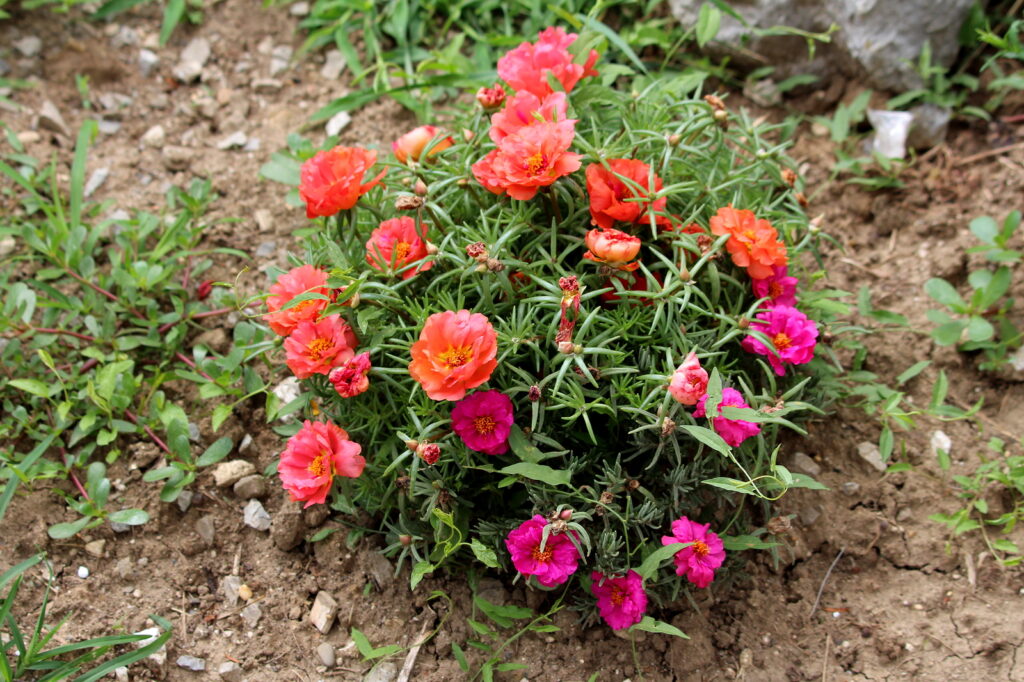
When to plant Portulaca
- Set Portulaca in the garden in spring after all danger of frost has passed.
- Start seed indoors 4 to 8 weeks before the last frost in spring.
- Sow seeds outdoors during warm weather; plant seeds in winter in Zones 10-11.
- Set transplants in the garden after all danger of frost has passed; harden off plants for a few days before transplanting.
Planting and spacing Portulaca
- Sow Portulaca seed thinly; barely cover the seeds with soil.
- Seeds germinate in about 7 days at 75°F (24°C).
- Sow seeds indoors in small pots or flats filled with moist potting soil; grow seedlings in bright light or below fluorescent light.
- Sow seeds outdoors in well-worked, smooth soil; press seeds into the soil, barely covering them.
- Thin seedlings growing outdoors when crowded.
- Set Portulaca transplants in the garden after all danger of frost has passed.
- Space Portulaca 1 to 2 feet (30-61cm) apart.
How to water and feed Portulaca
- Keep the soil just moist until plants are established.
- Once established water Portulaca sparingly, allowing the soil to dry between waterings.
- Lightly fertilize moss roses at planting with an all-purpose fertilizer. Fertilize periodically during active growth.
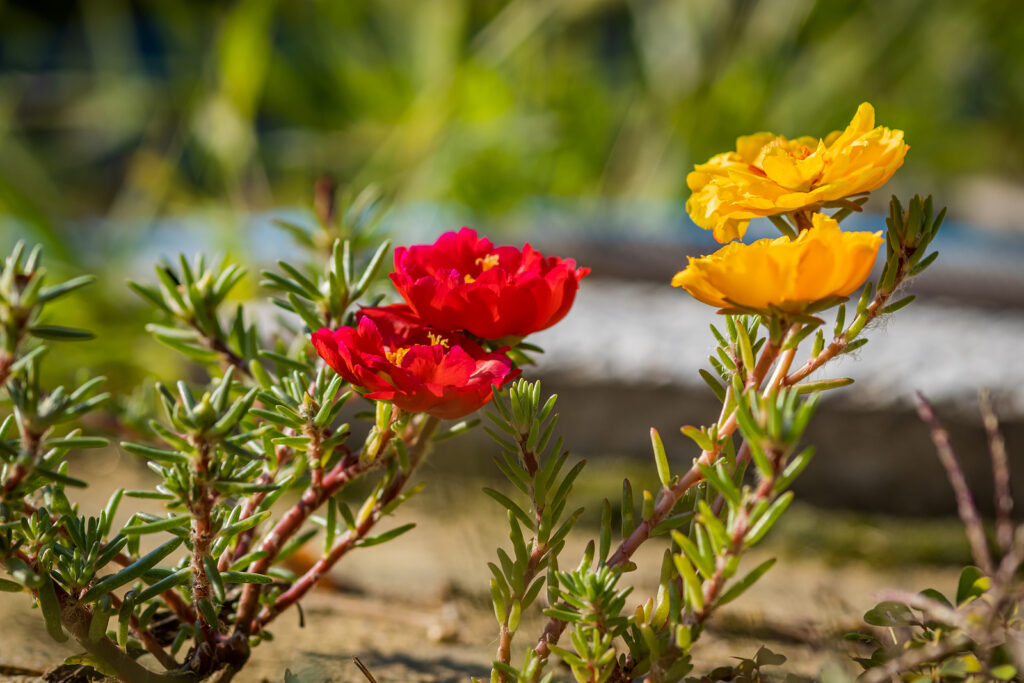
Portulaca care
- Mulch around plants in very dry areas; mulch with aged compost or chopped leaves.
Portulaca pests and diseases
- Portulaca is susceptible to aphids, thrips, and white rust.
Good Products for Seed Starting Success at Amazon:
- Jump Start Germination Station w/Heat Mat Tray, 72-Cell Pack, Dome
- Espoma Seed Starting Mix
- 200 Count- Jiffy 7 Peat Soil Seed Starting Plugs
- Seed Starter Kit with Humidity Dome (120 Cells Total Tray)
- AgrobriteT5 Fluorescent, 2-Foot, Grow Light System
Portulaca propagation
- Sow seeds indoors 6 to 8 weeks before the last frost.
- Germination occurs in 10 to 14 days at 70° to 80°F (21°-27°C).
- Portulaca will self-sow.
- Propagate Portulaca by rooting cuttings off the stem section in spring.
- Take a 4-inch cutting, remove the bottom leaves, and plant in shady, moist, humus-rich, or sandy soil.
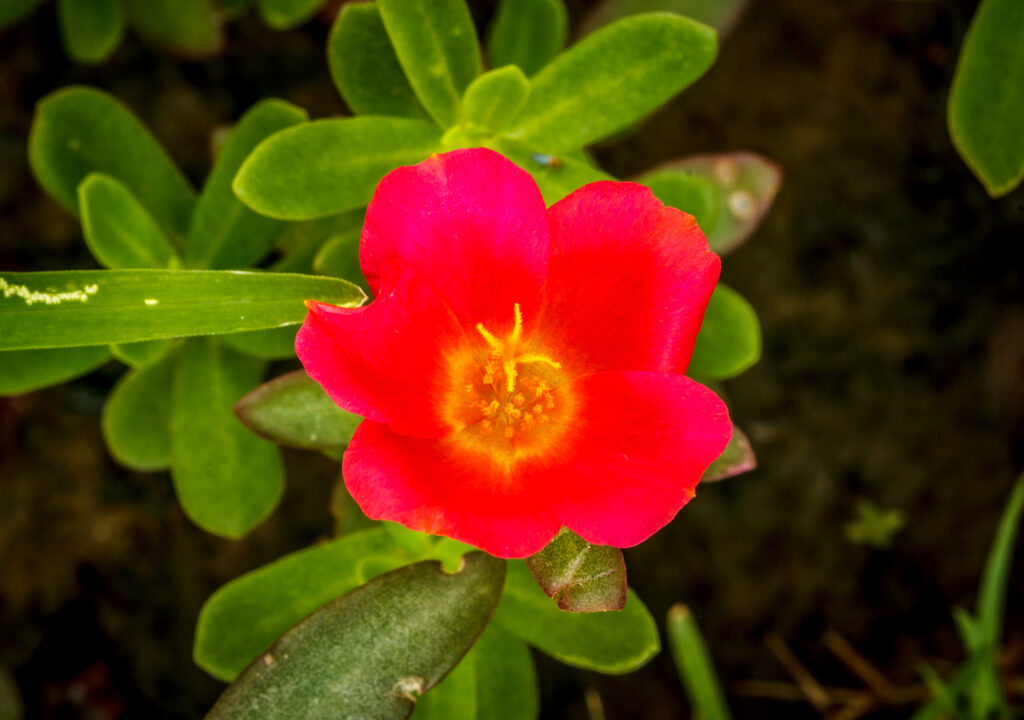
Portulaca varieties to grow
- Portulaca grandiflora has needle-shaped leaves topped with fluffy flowers; this is a favorite garden annual
- ‘Sundial’ and ‘Sundance’ cultivars have flowers that remain open all day; older varieties close in the afternoon.
- Portulaca oleracea, purslane, has bright single flowers and succulent, prostrate stems.
Portulaca frequently asked questions
Q: Can I grow portulaca from seed?
A: Portulaca is easy to grow from seed sown outdoors after all danger of frost has passed. Grow portulaca in well-drained, dry, light, sandy, but not rich soil, in full sun. You can start portulaca indoors 6 to 8 weeks before the last frost for transplanting into the garden after the last frost. Seeds germinate in about 10 to 15 days at 70°F.
Q: Doe portulaca self-sow?
A: Portulaca readily self-sows, but seedlings do not appear until late spring after the soil has warmed. Thin crowded seedlings and transplant them to an open space.
Q: Where is a good place for portulaca in the garden?
A: Portulaca is low-growing and nearly prostrate. It can be grown at the front of a bed or border or at the front or edge of a container. It is a tough plant and will not languish if you forget to water it.
Related Articles:

